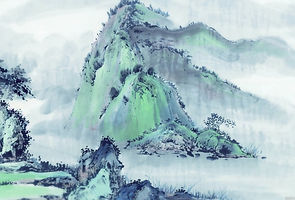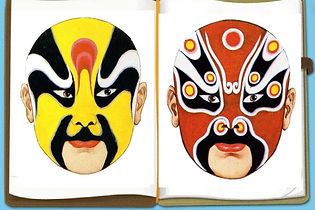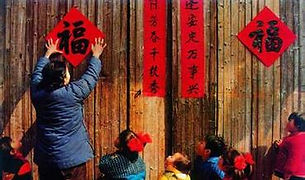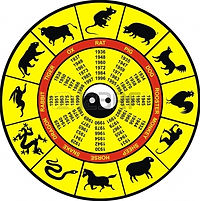
Intriguing Chinese Traditional Culture to Explore
China is one of the Four Ancient Civilizations (alongside Babylon, India and Egypt), according to Chinese scholar Liang Qichao (1900). It boasts a vast geographic expanse, 3,600 years of written history, as well as a rich and profound culture. Many aspects of Chinese culture can be traced back many centuries. Chinese culture is so diverse and unique, yet harmoniously blended, and presents itself an invaluable asset to the world.

Chinese Kungfu
The theory of kung fu is based upon classical Chinese philosophy. Over its long history it has developed as a unique combination of exercise, practical self-defense, self-discipline, and art.
Chinese kung fu is a large system of theory and practice. It combines techniques of self-defense and health-keeping.
In Chinese kung fu, a distinction is made between "external" and "internal" kung fu. It is said that "In external kung fu, you exercise your tendons, bones, and skin; in internal kung fu, you train your spirit, your qi, and your mind." And so internal kung fu can continue later in life, when the external body weakens.

Chinese Calligraphy
The literal definition of the word calligraphy is simply "good writing", but in the sense of Chinese calligraphy, the meaning goes deeper than simply writing the characters, or even striving to make the characters look beautiful. It is considered to be an art form requiring mental disciple, which involves both the body and soul.
Chinese written characters have a unique ability to express spiritual feelings and other emotions as well as character and integrity, and can even convey the temperament of the one doing the writing.
Since Chinese calligraphy is an art, there are special tools required that have been used from ancient times to the present. These four tools are called the the Four Treasures of the Study (ink stick, ink stone, brush and paper).
.

Chinese Painting
Chinese painting has a rich history as an enduring art form and is well known throughout the world. Traditionally, Chinese painting is done on rice paper or thin silk, using a variety of brushes, Chinese ink and dye. Chinese painting covers a variety of subjects: portrait, landscape, flowers, birds, animals, and insects.
Traditional Chinese painting is known as “guo hua (国画)”. Like calligraphy, the painting is done using a brush dipped in black or colored ink, usually on paper or silk. The finished work can be mounted on scrolls and hung. Traditional painting has also been done on walls, porcelain and lacquer ware.

Chinese Food
China can be divided into many geographical areas, and each area has a distinct style of cooking. The ingredients used in the food are based on the natural agricultural products of the region.
In Northern China, for example, wheat is eaten more than rice as a staple food. Food using wheat as its main ingredient, such as noodles and dumplings is prevalent there. China's Southern cuisine uses far more rice, with such staples as rice noodles and zongzi - sticky rice wrapped in leaves. Southern food, is typically more spicy, and many minorities eat chilies every day.

Chinese Tea Culture
Drinking tea:Tea is taken as a beverage to quench thirst.
Tasting tea: The quality of the tea is judged by the color, fragrance and flavor of the tea, the water quality and even the tea set. When tasting tea, the taster should be able to savor the tea thoroughly.
Tea art: While drinking attention is paid to environment, atmosphere, music, infusing techniques and interpersonal relationships.
The highest ambit-- tea lore : Philosophy, ethics and morality are blended into tea activity. People cultivate their morality and mind, and savor life through tasting tea, thereby attaining joy of spirit.

Beijing Opera
Beijing Opera of China is a national treasure with a history of 200 years.
Over a period of more than half a century of combination and integration of various kinds of opera there evolved the present Beijing Opera.
Beijing Opera is a synthesis of stylized action, singing, dialogue and mime, acrobatic fighting and dancing to represent a story or depict different characters and their feelings of gladness, anger, sorrow, happiness, surprise, fear and sadness. The characters may be loyal or treacherous, beautiful or ugly, good or bad, their images being vividly manifested.

Chinese New Year
Chinese New Year is an important Chinese festival celebrated at the turn of the Chinese calendar. It is also known as the Spring Festival, the literal translation of the modern Chinese name. Chinese New Year celebrations traditionally run from Chinese New Year's Eve, the last day of the last month of the Chinese calendar, to the Lantern Festival on the 15th day of the first month, making the festival the longest in the Chinese calendar. The first day of the New Year falls between January 21 and February 20.

Chinese Achitecture
Chinese architecture refers to a style of architecture that has taken shape in East Asia over many centuries. The structural principles of Chinese architecture have remained largely unchanged, the main changes being only the decorative details. Since the Tang Dynasty, Chinese architecture has had a major influence on the architectural styles of Korea, Vietnam, and Japan.
An important feature in Chinese architecture is its emphasis on articulation and bilateral symmetry, which signifies balance.
In contrast to the buildings, Chinese gardens are a notable exception which tend to be asymmetrical. The principle underlying the garden's composition is to create enduring flow

China's Zodiac Animals
The Chinese animal zodiac, or shengxiao is a repeating cycle of 12 years, with each year being represented by an animal and its reputed attributes. Traditionally these zodiac animals were used to date the years.
In order, the 12 animals are: Rat, Ox, Tiger, Rabbit, Dragon, Snake, Horse, Goat, Monkey, Rooster, Dog, Pig.
The 12 Chinese Zodiac animals are in a fixed order according to Chinese Yin and Yang Theory and perceived attributes.






